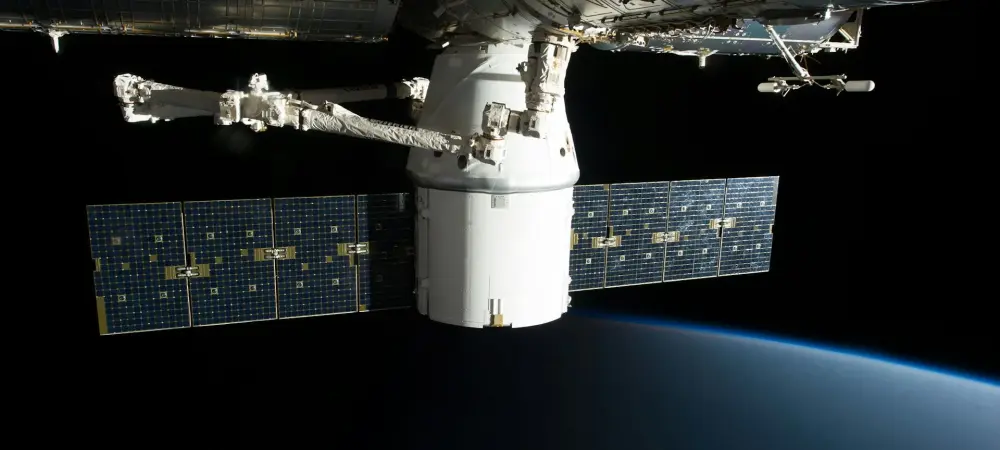The convergence of advanced satellite technology with consumer internet demands presents both an opportunity and a formidable challenge. Starlink, SpaceX’s ambitious satellite broadband venture, is positioned at the forefront of this transformation, aspiring to redefine connectivity standards globally. While its download performance has improved, meeting stringent Federal Communications Commission (FCC) broadband standards remains a challenge due to subpar upload capabilities. Analyzing recent data from Ookla’s Speedtest, this exploration delves into Starlink’s journey, revealing significant progress and persistent obstacles in achieving seamless satellite internet.
Evaluating Performance Metrics
Assessing Download and Upload Speeds
Starlink’s commitment to enhancing internet accessibility becomes evident when examining its download speed achievements against FCC benchmarks. With median download speeds reaching 104.71 Mbps, Starlink surpasses the FCC’s baseline requirement of 100 Mbps for broadband connectivity. This marks a visible recovery from speed dips experienced in 2022, showcasing a resilient infrastructure seeking reliability. Yet, despite commendable download accomplishments, upload speeds paint a different picture, with the latest metrics reflecting a median of 14.84 Mbps. Falling short of the FCC’s 20 Mbps standard, this deficiency underscores the need for continued technological fine-tuning. The implications of failing to fully meet the FCC’s criteria are multifaceted. Only 17.4% of Starlink users meet the complete requirements for broadband service, placing emphasis on the need for enhancements in upload capabilities. This inconsistency diminishes the service’s competitive edge in markets where higher speeds and reliability are increasingly crucial. Such challenges highlight Starlink’s ambition to not only bridge connectivity gaps but excel in delivering comprehensive broadband solutions in diverse environments.
Latency and Connectivity Advantages
Beyond speed, latency serves as a pivotal metric influencing user experience in satellite internet. Traditional satellite services often grapple with high latency, an area where Starlink strives to differentiate itself. Using satellites in low Earth orbit (LEO), Starlink endeavors to achieve more favorable latency figures, bridging the gap closer to terrestrial networks. While current latency levels fall short of the ambitious 20 milliseconds target, they signify a promising stride towards optimizing real-time interactions in online activities. The significance of improving latency extends to application performance in fields such as remote work, online gaming, and telemedicine. By minimizing delays in data transmission, Starlink aims to provide users with an experience closer to established broadband providers. However, achieving optimal latency calls for ongoing satellite deployment and refinement in network architecture. These steps are crucial as Starlink positions itself as a competitive alternative in the market, promising enhanced connectivity even in remote regions.
Navigating Regulatory and Competitive Landscapes
Regulatory Challenges and Opportunities
Starlink’s aspirations align with the evolving regulatory landscape, where policy changes open avenues for growth while imposing new constraints. The Federal Broadband Equity, Access, and Deployment (BEAD) program reflects a comprehensive approach, mandating inclusivity across various technologies, including satellites. This broadened scope provides Starlink an opportunity to participate actively in shaping broadband accessibility, particularly in underserved regions. However, these regulations also introduce heightened scrutiny, demanding rigorous compliance with quality and performance standards across diverse service offerings. The competitive implications of regulatory developments cannot be understated. As technological diversity becomes a policy focus, the emergence of rival technologies such as fiber optics adds layers to the strategic landscape. Starlink faces a dual challenge: adapting to compliance mandates while differentiating its service in a dynamic market. Strategic partnerships and investments in technological advancements become key to anticipating shifts in regulatory expectations and leveraging them for market growth.
Partnerships and Market Integration
Strategically navigating market challenges necessitates collaboration and innovation, areas where Starlink actively seeks growth. Starlink’s collaboration with T-Mobile US exemplifies this approach, enhancing direct-to-device (D2D) coverage. By extending connectivity to areas beyond the reach of traditional networks, Starlink fills a vital gap in national parks and low-density counties, showcasing its potential in addressing specific geographic constraints. Collaborations like this underline Starlink’s adaptability and commitment to expanding core service propositions beyond conventional models.
Moreover, understanding market dynamics highlights the importance of integrating with broader networks and ecosystems. As terrestrial networks evolve and expand, creating synergistic partnerships with key players enables Starlink to align with existing infrastructures and consumer bases. These collaborations amplify Starlink’s reach, enabling targeted deployment in regions with specific connectivity needs, thereby demonstrating adaptability and market consciousness in a competitive landscape.
Future Directions and Technological Evolution
Enhancing User Experience and Infrastructure
Starlink’s impact is twofold: delivering enhanced user experiences while continuously upgrading its infrastructure to maintain its competitive edge. Achieving these objectives requires addressing both technological and operational challenges. On the user experience front, emphasis on balancing download and upload capacities will be crucial, particularly for users reliant on high-bandwidth activities. Investing in additional satellites and refining communication algorithms could significantly contribute to narrowing the gap between current capabilities and consumer expectations.
In terms of infrastructure, a pivotal strategy involves expanding the breadth of satellite constellations to near-complete global coverage. Pioneering advancements in antenna technology and spectrum management are instrumental in ensuring efficient data flow and consistent services. These technological upgrades will play a central role in shaping Starlink’s trajectory over the coming years, ensuring that users experience both high speed and reliability across varying geographical locations.
Strategic Vision and Long-Term Goals
The merging of cutting-edge satellite technology with the growing demands for consumer internet signals both an exciting opportunity and a sizable challenge. Starlink, spearheaded by SpaceX, is at the helm of this shift, aiming to transform global connectivity standards. Despite improvements in download speeds, Starlink faces hurdles in adhering to the Federal Communications Commission’s (FCC) stringent broadband criteria, largely due to its suboptimal upload performance. By examining the latest data from Ookla’s Speedtest, we gain insights into Starlink’s progress and persistent challenges in delivering flawless satellite internet. Although Starlink has made notable strides toward better download and upload speeds, accomplishing complete FCC compliance remains a significant obstacle. This exploration into Starlink’s journey reveals the dual nature of breakthrough technology that promises wide-ranging connectivity while grappling with technical barriers, setting the stage for ongoing advancements in satellite internet services.

